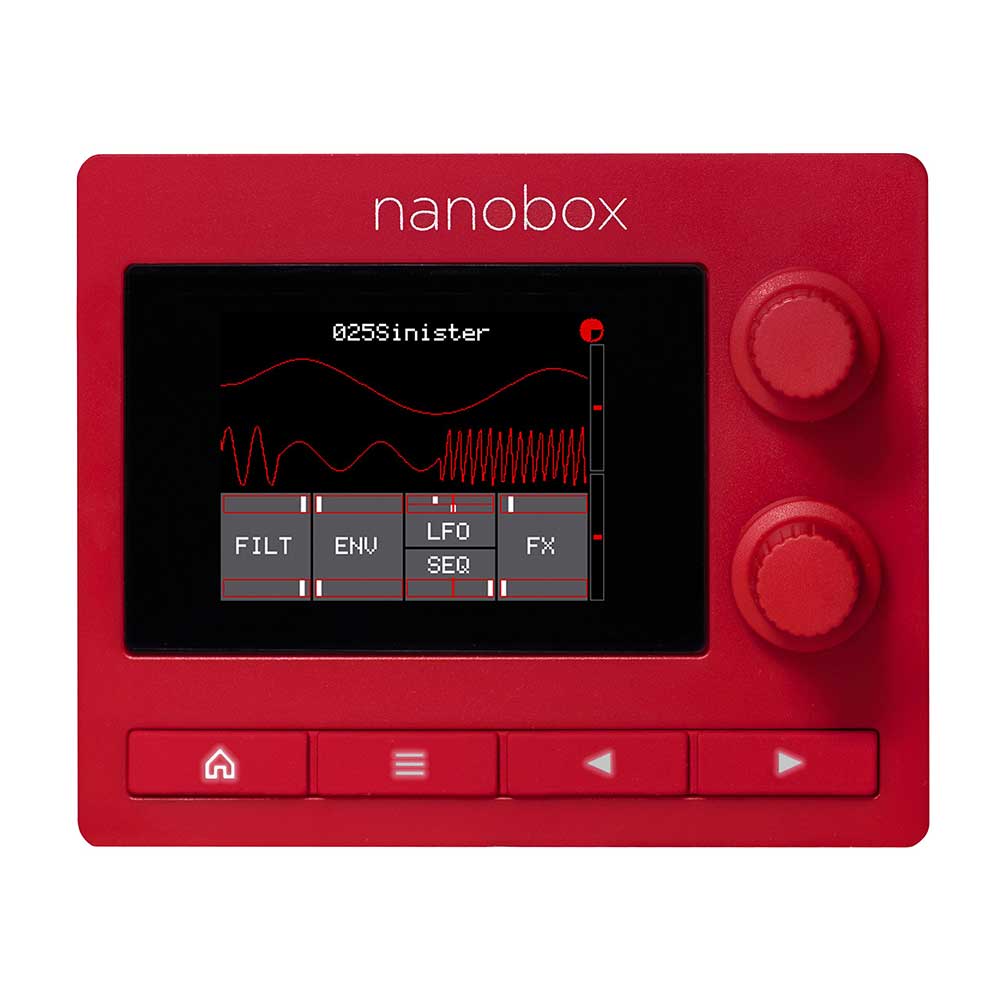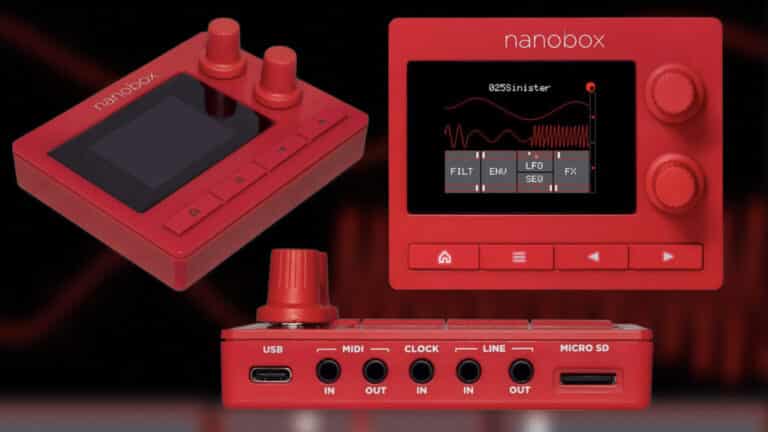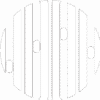Last Updated on September 21, 2022 by IDS Team
What is the 1010 Music Nanobox Fireball?
The 1010 Music Nanobox Fireball is one of two Nanobox synths designed by the team at 1010 audio and as a result, it follows much the same outline as its sister synth the Lemondrop, bar a few key differences and the fact that it is red instead of yellow. The trend for small, portable synths has been a relatively small but significant part of the synth market since the launch of the Volca by Korg in 2013. Nevertheless, with the Lemondrop and Fireball, what 1010 music has done so well is taken every feature you would want in a smaller piece of kit and streamlined them into an updated, cutting edge little polyphonic synth which grabs both the ear and the eye.
How does the 1010 Music Nanobox Fireball differ from other synths on the market?
One of the most stand-out features of the Fireball’s design is an overall pattern as opposed to a single piece of kit or specification. 1010 music have gone out of their way to create a synth which takes all the features needed to craft fantastic sound and executed their assembly with outstanding efficiency. The result is a synth which is really geared towards the modern musician in the sense that it is easy to learn from, portable, but also follows the natural process of sound designers in the way it facilitates ease and flow of work. Are there any cons?

The Fireball is not as stand out as its sister synth simply due to the fact it is competing against a much larger market due to wavetable synthesis being generally more common than granular. Therefore, if you already have a solid synth collection there may not be as much incentive to buy the Fireball; however, there is something to be said for its portability which sets it apart from other wavetable synths.
Specs and features
For all intents and purposes, the Fireball is much the same as the Lemondrop . The team behind 1010 music does actually market the two synths together, especially in the tutorial videos they have on their website. What’s more, the synths have the same interface and features – right down to details such as the number of inputs and outputs, compatibility, design, and layout of software. Off course, another thing they share is the extremely useful and intuitive touchscreen which allows users to mold the waveform to their liking, enabling them to get hands on experimenting with sound so as to control the custom synth patches they create.
However, there is one very big difference between the Fireball and the Lemondrop, which is that the fireball is a wavetable synthesizer in comparison to the Lemondrop, which is a granular synthesizer. This means they are capable of creating extremely different sounds and as a result it can be helpful to buy them alongside each other. You might not be getting two for the price of one, but the transferrable skills which are gained from learning the ins and outs of one mean that you can easily double the amount of creative possibilities open to you.
What is it like when getting your hands on the Fireball? One thing this synth does very well – like it’s companion – is using simplicity to get a lot of results. With two dials which control multiple parameters it is easy on the eyes and doesn’t require a lot of complicated hardware to create great sound. By simplifying things it leaves a lot more up to the musician’s own capabilities as opposed to spelling out every single possible way that sound can be shifted and altered. Nevertheless, it does have a good selection of default patches all of which share a characteristically creative way of looking at wavetable synthesis from the minds behind 1010 music. And for wavetable as opposed to granular synthesis like the Lemondrop, this means you are taking a type of synth which is more frequently seen on the market and with its bright hardware, easy to use software, and most of all the extreme control which can be had over the waveform, it gives any user a new spin on a form of synthesis which is more frequently seen. The combination of polyphony and visualisation of the wave in particular means that musicians are shaken out of their normal working patterns – this is really a synth which facilitates creativity.
The 1010 Music Nanobox Fireball has:
- 123 presets and 103 wavetables
- A USB-C cable and 3.5mm audio input and output
- 24-bit DAC and ADC resolution and 32 bit internal resolution
- A 96kHz oscillator sample rate
- MIDI support for all the following: note on/off, modulation wheel, sustain, pitch bend, mono & poly aftertouch, assignable CCs, and clock
Price and availability
At 399 USD, the Fireball is a mid-range wavetable synth and due to its high quality it isn’t necessarily made in bulk, though nevertheless is generally always available from the 1010 music website. Check out Reverb.com for a price update.
Final thoughts
Overall, the Fireball is essentially the wavetable edition of 1010’s attractive little nanobox synth series and because of this that it really depends on your priorities as a musician. Whilst wavetable synths are much more common than granular synths such as the Lemondrop and therefore the fireball is up against some stiffer competition, if your priority is portability, design, aesthetics, and simplicity – whilst all the while being an intuitive synth – then the Fireball is as worthy a synth for your collection as the Lemondrop despite having more features in common with other products. In fact, perhaps due to it doing similar things but more simply and cleanly than other synths on the market, it is a synth to really push you to use your maximum possible creativity.
And if you have an affinity for Music Hardware, we have a full category waiting for you, just click here!



